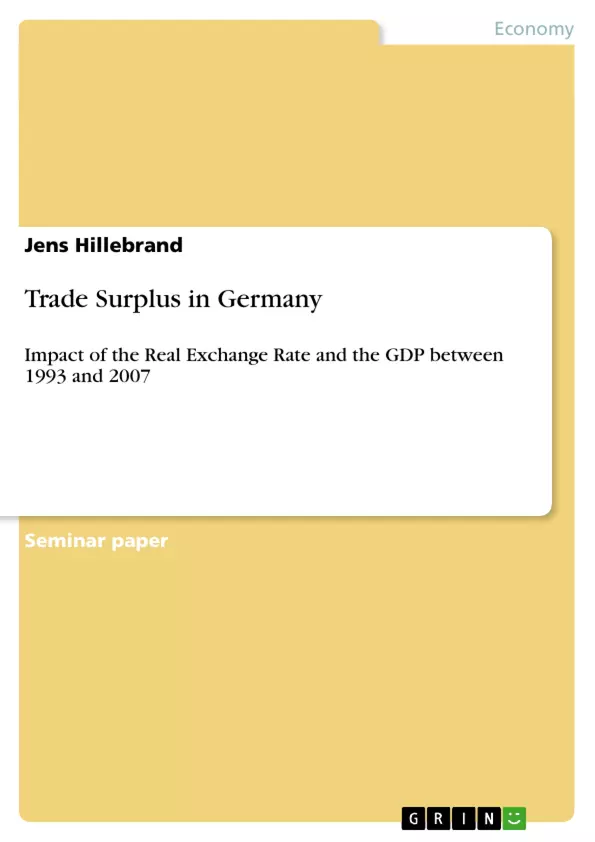This report analyses the impact of the real exchange rate two years beforehand and the GDP on Germany’s trade surplus between the second quarter 1993 and the first quarter 2007. It is found that both factors had significant impact on Germany’s trade surplus during the analysed period. Use of a piecewise linear regression technique, moreover, identifies changes in the development of Germany’s trade surplus over time. A temporary downward shift in the consistent growth trend of Germany’s trade surplus between the first quarter 1998 and the fourth quarter 2002 is seen to be due to changes in Germany’s fiscal and monetary policy during the introduction phase of the Euro.
Inhaltsverzeichnis (Table of Contents)
- Abstract
- Introduction
- Theoretical Considerations
- Germany's Trade Surplus Model
- The Methodology
- The Data
- Discussion of the Estimation Results and their Implications
- Conclusion
- Appendices
- References
Zielsetzung und Themenschwerpunkte (Objectives and Key Themes)
This report explores the impact of the real exchange rate and GDP on Germany's trade surplus between 1993 and 2007. The analysis aims to understand how these factors influence the country's trade balance and identify any trends in its development.
- The relationship between the real exchange rate and Germany's trade surplus.
- The impact of GDP on Germany's trade surplus.
- The use of a piecewise linear regression technique to analyze changes in the trade surplus over time.
- The implications of the Euro's introduction on Germany's trade surplus.
- The role of capital- and technology-intensive machinery in Germany's trade balance.
Zusammenfassung der Kapitel (Chapter Summaries)
- Abstract: This chapter provides a brief overview of the report, outlining the main findings regarding the impact of the real exchange rate and GDP on Germany's trade surplus.
- Introduction: This chapter introduces the concept of the real exchange rate and its importance for international business. It also discusses the historical development of Germany's exports and real exchange rate, highlighting the need for further analysis.
- Theoretical Considerations: This chapter explores the theoretical implications of changes in a country's real exchange rate on its trade balance, particularly focusing on the relationship between real exchange rates and trade surpluses.
- Germany's Trade Surplus Model: This chapter presents the methodology and data used for the analysis, providing insights into the construction of the model and the data sources used.
Schlüsselwörter (Keywords)
The report focuses on the impact of the real exchange rate, GDP, and trade surplus in Germany, analyzing the relationship between these variables and exploring the implications for Germany's economic competitiveness and trade performance. Key concepts explored include the methodology of piecewise linear regression, the influence of fiscal and monetary policies, and the role of technology-intensive machinery in international trade.
- Quote paper
- Jens Hillebrand (Author), 2007, Trade Surplus in Germany, Munich, GRIN Verlag, https://www.grin.com/document/87790



